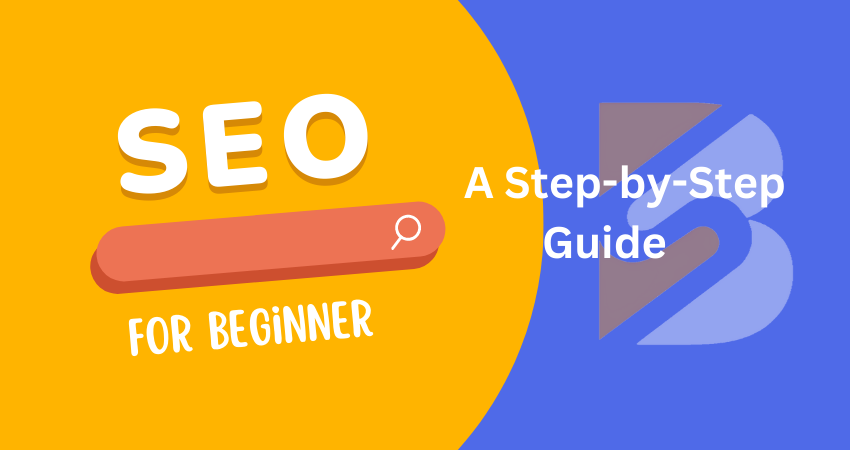Search engine optimization (SEO) is the process of improving the ranking of a website or web page in search engine results pages (SERPs). SEO can be done on-page, off-page, or both. On-page SEO refers to the optimization of a website or web page itself, while off-page SEO refers to the optimization of a website or web page’s backlinks.
SEO is important for businesses of all sizes, as it can help them to attract more visitors to their website. Visitors to a website can then be converted into customers, leads, or subscribers. If you are looking for a reliable SEO agency service in Ahmedabad, there are several options available to choose from. These agencies can help you optimize your website or web page to rank higher in search engine results pages (SERPs) and drive more organic traffic to your website.
If you are new to SEO, you may be wondering where to start. Here is a step-by-step guide to SEO for beginners:
Step 1: Choose the right keywords.
The first step is to choose the right keywords for your blog posts. You want to choose keywords that are relevant to your topic and that people are actually searching for. You can use a keyword research tool like Google’s Keyword Planner to help you find the right keywords.
There are a number of tools that you can use to help you choose your keywords. One popular tool is Google’s Keyword Planner. The Keyword Planner allows you to enter a keyword or phrase and see how many people are searching for that keyword each month. It also shows you the competition level for that keyword.
When choosing keywords, you need to consider the following factors:
- Relevance: The keywords you choose should be relevant to your topic. You don’t want to choose keywords that are only tangentially related to your topic, as this will make it difficult for people to find your blog posts.
- Search volume: The search volume is the number of people who search for a particular keyword each month. You want to choose keywords with a high search volume, as this will give you a better chance of ranking for those keywords in search results pages.
- Competition: The competition is the number of other websites that are ranking for a particular keyword. You want to choose keywords with low competition, as this will make it easier for you to rank for those keywords.
Once you’ve chosen your keywords, you need to use them throughout your blog posts. You can use keywords in your title tag, URL, meta description, H1 tags, and throughout your content.
Step 2: Use keywords in your title tag.
The title tag is the first thing that people see when they search for your keywords, so it’s important to make it catchy and informative. Be sure to include your target keywords in your title tag, but don’t keyword stuff.
Keyword stuffing is when you use too many keywords in your title tag, which can make your title tag look spammy and can hurt your chances of ranking for those keywords.
A good title tag should be around 60 characters long and should include your target keywords. It should also be clear and concise and should give people a good idea of what your blog post is about.
Step 3: Use keywords in your URL.
Your URL should also include your target keywords. This will help people find your blog posts when they search for those terms.
Your URL should be short and easy to remember. It should also be relevant to your blog post topic.
Step 4: Use keywords in your meta description.
The meta description is the brief description that appears under your title tag in search engine results pages. Be sure to include your target keywords in your meta description, but keep it short and to the point.
A good meta description should be around 160 characters long and should include your target keywords. It should also be clear and concise and should give people a good idea of what your blog post is about.
Step 5: Use keywords in your H1 tags.
Using keywords in H1 tags is an important on-page SEO technique that can help improve the ranking and visibility of your website in search engine results pages (SERPs).
H1 tags are the main headings in your blog posts. Be sure to include your target keywords in your H1 tags.
By including relevant keywords in your H1 tag, you can signal to search engines what your page is about and improve its chances of ranking for those keywords.
Step 6: Create high-quality content.
The second step in SEO is to create high-quality content. High-quality content is content that is informative, well-written, and engaging. It is also content that is relevant to your target audience.
When you create high-quality content, you are more likely to attract visitors to your website and to keep them coming back for more. You are also more likely to rank higher in search engine results pages.
Don’t just stuff your keywords into your title tag, URL, and meta description. Be sure to use them throughout your content as well. However, don’t overdo it. You want your content to be readable and informative, so don’t force the keywords in.
When using keywords in your content, you need to use them naturally. Don’t just cram them into your content. Instead, try to use them in a way that makes sense.
You can also use synonyms and related keywords to help you rank for your target keywords.
Step 7: Build backlinks to your website.
Backlinks are links from other websites to your website. Backlinks are important for SEO because they help to tell search engines that your website is authoritative and trustworthy.
You can build backlinks by guest blogging, participating in social media, and submitting your website to directories.
When building backlinks, it’s important to get backlinks from high-quality websites. Backlinks from low-quality websites can actually hurt your SEO.
Step 8: Monitor your progress.
Once you’ve published your blog posts, it’s important to monitor your progress. You can use a tool like Google Search Console to track your website’s ranking for your target keywords.
Google Search Console is a free tool from Google that allows you to see how your website is performing in search results pages. You can use Google Search Console to track your website’s ranking for your target keywords, as well as other metrics like click-through rate and impressions.
In conclusion, writing SEO-friendly blog posts is a great way to attract more visitors to your website. SEO can be a complex process, but it is important for businesses of all sizes. By following the steps in this guide, you can improve the ranking of your blog posts in search results pages and attract more visitors to your website.



